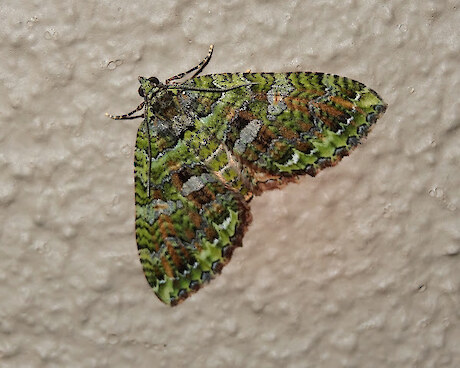 Helm’s forest ringletNot long ago our native butterflies and moths were far more abundant than they are today. The once-common Red Admirals and Yellow Admirals are now seriously endangered, and the endemic Forest Ringlet was routinely seen in suburban gardens within living memory.
Helm’s forest ringletNot long ago our native butterflies and moths were far more abundant than they are today. The once-common Red Admirals and Yellow Admirals are now seriously endangered, and the endemic Forest Ringlet was routinely seen in suburban gardens within living memory.
Loss of habitat has hastened their decline, but the main culprit is invasive wasps. Urban Ark – Manawa Taiao takes wasps seriously in the array of pests we need to hit hard in order to restore our unique biodiversity. Visit our wasps page, and also check out our Back Gardens section to see what you can do in your patch.
Monarchs
The much-loved kahuku / Monarch butterflies are relatively common around the world, but are regarded as a New Zealand native as they arrived here under their own power. The Monarch Butterfly New Zealand Trust, is your go-to for everything monarchy.
 Red AdmiralAdmirals
Red AdmiralAdmirals
The kahu kōwhai / Yellow Admiral is another native, self-introduced from Australia, but the strikingly-beautiful kahukura / Red Admiral is totally unique to New Zealand. Unfortunately for our colourful Admirals, their caterpillars feed exclusively on nettles, both native and introduced species, and nettles sting. But so do bees, and we like bees. Consider growing some nettles in your yard. Contact us and we’ll do our best to get you some plants. More importantly, do your best to control our butterfly’s major predator, invasive wasps.
On a very positive note, there are several people in our area breeding native Admirals in partial captivity, protected from wasp attack, and then releasing into the “wild”. Provided we can control wasps, admirals could once again become a common sight, even in a suburban environment. And perhaps one day we can even lure back the Forest Ringlet.
 Rauparaha’s Copper ButterflyCoppers
Rauparaha’s Copper ButterflyCoppers
Our local Copper Butterflies are unique to New Zealand and especially like Auckland’s coastal margins where their caterpillars feed on Muehlenbeckia species, at least when the wasps don’t get them first. Unfortunately coppers don’t migrate very far so re-establishing them to where they aren’t, is a slow process. Everyone should have some Muehlenbeckia.
 Green Coprosma MothMoths
Green Coprosma MothMoths
Moths are almost always overlooked as the dowdy LBJs (Little Brown Jobs) of our flying insect world, but are incredibly diverse and a vital part of a healthy ecosystem. Around 80% are unique to New Zealand and many are very beautiful up close. There is growing evidence that a drastic decline is happening and that it’s probably world-wide. A nationwide survey in Germany reports an 80% decline!
 Puriri MothOur native birds and reptiles cannot survive and reproduce without a constant supply of invertebrates, and moths and their caterpillars are a major part of a healthy ecosystem. You can encourage our native moths by avoiding insecticides and instead enjoying seeing leaves munched, knowing that it’s all part of a working ecosystem. Plant a wide variety of native trees and plants to narrow the gaps where these creatures may otherwise disappear for lack of their favourite plants. Let leaves naturally build up around and under your garden and of course, deal to your wasps where and when you can. Any visiting pīwakawaka will thank you with its presence.
Puriri MothOur native birds and reptiles cannot survive and reproduce without a constant supply of invertebrates, and moths and their caterpillars are a major part of a healthy ecosystem. You can encourage our native moths by avoiding insecticides and instead enjoying seeing leaves munched, knowing that it’s all part of a working ecosystem. Plant a wide variety of native trees and plants to narrow the gaps where these creatures may otherwise disappear for lack of their favourite plants. Let leaves naturally build up around and under your garden and of course, deal to your wasps where and when you can. Any visiting pīwakawaka will thank you with its presence.
